Rossmax X5 BT Handleiding
Rossmax
Bloeddrukmeter
X5 BT
Bekijk gratis de handleiding van Rossmax X5 BT (3 pagina’s), behorend tot de categorie Bloeddrukmeter. Deze gids werd als nuttig beoordeeld door 50 mensen en kreeg gemiddeld 4.8 sterren uit 25.5 reviews. Heb je een vraag over Rossmax X5 BT of wil je andere gebruikers van dit product iets vragen? Stel een vraag
Pagina 1/3

Pairing the Blood Pressure Monitor with your Smart-
phone
To begin using Bluetooth® for the rst time, please visit the
website at http://www.rossmax.com for the initial set-up
instructions.
1. Download and install the applicable APP onto your
smartphone.
2. To bind this device with your smartphone, turn on the
device, Bluetooth® and the App of smartphone, and fol-
low set-up and binding instructions.
3. If the binding is successful, the Bluetooth® symbol ( )
will appear on the display and keep ashing during data transfer. The current measured
value will automatically be transferred to the App when the measurement is completed.
4. If the binding has failed, the Bluetooth® symbol ( ) will not appear on the display and
the current measured value will not automatically be transferred to the App. In this case,
the value is saved in the selected user memory zone. Please re-bind this device with your
smartphone and follow App instructions for Bluetooth® transfer.
APP
APP
120mmHg
120mmHg
USB PC
BP Manager
1. The monitor has two memory zones (1 and 2). Each zone can store up to 60 measure-
ments.
2. To read memory values from a selected memory zone, use the User-Switching key to
select a memory zone (1 or 2) from which you want to recall values. Press the Memory
key. The rst reading displayed is the average of all morning readings from the last 7
days.
3. Continue to press the Memory key to view the average of all nighttime readings from
the last 7 days.
4. Press the Memory key again to view the average of the last 3 measurements stored in
memory, and the last previously stored measurement. Every measurement comes with
an assigned memory sequence number.
5. All readings currently saved on the device can be transferred to the App using Blue-
tooth® after successful completion of the binding process. Select the desired user
memory zone and follow App instructions, the Bluetooth® transfer starts automatically.
Data transfer will be halted while performing a measurement or operating the device.
Note: The memory bank can store up to 60 readings per memory zone. When the num-
ber of readings exceeds 60, the oldest data will be replaced with the new record.
Note: AM is dened as 4:00 AM – 11:59 AM
Note: PM is dened as 6:00 PM – 2:00 AM
1. Press the User-Switching key to select memory zone 1 or memory zone 2.
2. Press and hold the Memory key for approximately 5 seconds, then the data in the mem-
ory zone can be erased automatically.
1. Adjust the date/time/Bluetooth® in the monitor by installing or replacing batteries or
holding down the ON/OFF/START key for approximately 5 seconds under power o
mode. The display will show a blinking number showing the year.
2. Change the year by pressing the Memory key, each press will increase the number.
Press the ON/OFF/START key to conrm the entry and the screen will show a blinking
number representing the date.
3. Change the date, the hour and the minute as described in Step 2 above, using the
Memory key to change and the ON/OFF/START key to conrm the entries.
4. After adjusting the date/time, the Bluetooth® symbol ( ) and the blinking icon “ ”
will be shown on the display simultaneously. Use the Memory key to choose whether
automatic Bluetooth® data transfer is activated (Bluetooth® symbol ( )+ ) or de-
activated (Bluetooth® symbol ( )+ ) and conrm with the ON/OFF/START key.
5. Press the ON/OFF/START key again, “0” will reappear as the Blood Pressure Monitor is
ready for measurement.
Rossmax provides a free, integrated and user-friendly blood pressure management soft-
ware which can be downloaded and installed on your computer. You may purchase a spe-
cial designed USB cable in order to connect Rossmax’s blood pressure monitor and your
PC. Please visit the website at http://www.rossmax.com for proceeding the downloading
and installation process.
If any abnormality will arise during use, please check the following points.
Symptoms Check Points Correction
No display when
the ON/OFF/START
key is pressed
Have the batteries run down? Replace them with four new batteries.
Have the batteries' polarities
been positioned incorrectly? Re-insert the batteries in the correct
positions.
EE mark shown
on display or the
blood pressure
value is displayed
excessively low
(high)
Is the cuff placed correctly? Wrap the cuff properly so that it is
positioned correctly.
Did you talk or move during
measurement? Measure again. Keep arm steady dur-
ing measurement.
Did you vigorously shake the
cuff during measurement?
Note: If the unit still does not work, return it to your dealer. Under no circumstance should
you disassemble and repair the unit by yourself.
1. The unit contains high-precision assemblies. Therefore, avoid extreme temperatures, hu-
midity, and direct sunlight. Avoid dropping or strongly shocking the main unit, and pro-
tect it from dust.
2. Clean the blood pressure monitor body and the cu carefully with a slightly damp, soft
cloth. Do not press. Do not wash the cu or use chemical cleaner on it. Never use thinner,
alcohol or petrol (gasoline) as cleaner.
3. Leaky batteries can damage the unit. Remove the batteries when the unit is not used for
a long time.
4. The unit should not be operated by children so to avoid hazardous situations.
5. If the unit is stored near freezing, allow it to acclimate at room temperature before use.
6. This unit is not eld serviceable. You should not use any tool to open the device nor should
you attempt to adjust anything inside the device. If you have any problems, please contact
the store or the doctor from whom you purchased this unit or please contact Rossmax
International Ltd.
7. As a common issue for all blood pressure monitors using the oscillometric measurement
function, the device may have diculty in determining the proper blood pressure for us-
ers diagnosed with diabetes, poor circulation of blood, kidney problems, or for users suf-
fered from stroke, or for unconscious users.
8. This unit is able to detect common arrhythmia (atrial or ventricular premature beats or
atrial brillation). The ARR, AFib and PC icons are displayed after the measurement if Atrial
Fibrillation and Premature Contraction was detected during the measurement. If ARR,
AFib or PC icons are displayed, you are advised to wait for a while and take another meas-
urement. It is strongly recommended that you consult your physician if the ARR, AFib or
PC icons appear often.
9. While the given device is able to detect specic pulse arrhythmia, the measurement ac-
curacy of the blood pressure meter may be impaired with the occurrence of pulse ar-
rhythmia.
10. To stop operation at any time, press the ON/OFF/START key, and the air in the cu will be
rapidly exhausted.
11. Once the ination reaches 300 mmHg, the unit will start deating rapidly for safety rea-
sons.
12. Please note that this unit can be a home healthcare product, but it is not intended to
serve as a substitute for the advice of a physician or medical professional.
13. Do not use this device for diagnosis or treatment of any health problem or disease. Meas-
urement results are for reference only. Consult a healthcare professional for interpreta-
tion of pressure measurements. Contact your physician if you have or suspect any medi-
cal problem. Do not change your medications without the advice of your physician or
healthcare professional.
14. Electromagnetic interference: Avoid strong electrical or electromagnetic elds in the
direct vicinity of the device (e.g.mobile telephones, microwave ovens) or less than 1,5
km from AM, FM or TV broadcast antennas. These may lead to temporary impairment of
measurement accuracy.
15. Dispose of device, batteries, components and accessories according to local regulations.
16. This monitor may not meet its performance specication if stored or used outside tem-
perature and humidity ranges specied in Specications.
Measurement Method Oscillometric
Measurement Range Pressure: 30~260 mmHg; Pulse: 40~199 beats/
minute
Pressure Sensor Semi conductor
Accuracy Pressure: ± 3 mmHg; Pulse: ± 5% of reading
Inflation Pump Driven
Deflation Automatic Air Release Valve
Memory capacity 60 memories for each zone x 2 zones
Auto-shut-off 1 minute after last key operation
Permissible Operating Temperature
and Humidity 10°C~40°C (50°F~104°F); %~85% RH; 700~1060 15
hPa
Permissible Transport and Storage
Temperature and Humidity -10°C~60°C (14°F~140°F); 10%~90% RH; 700~1060
hPa
DC Power Source DC 6V four AAA Batteries
AC Power Source DC 6V, (Plug size: outer(-) is Ø4.0, in≥600mA -
ner(+) is Ø1.7)
Dimensions 96 139.7 63.2 (L) X (W) X (H) mm
Weight 248.6g (G.W.) (w/o Batteries)
Arm circumference Adult: 24~40 cm (9.4”~15.7”)
Limited Users Adult users
: Type BF: Device and cuff are designed to provide
special protection against electrical shocks.
IP Classification IP21: Protection against harmful ingress of water
and particulate matter
*Specifications are subject to change without notice.
Recalling Values from Memory
Clearing Values from Memory
Time and Bluetooth® Adjustment
Data Transfer via Bluetooth®
Data Transfer to PC
Troubleshooting
Cautionary Notes
Specications
6. If Bluetooth® has been activated, the data is automatically transferred to the App after suc-
cessful completion of the binding process, please see Data Transfer via Bluetooth®.
This blood pressure monitor will re-inate automatically to higher pressure if the system
detects that more pressure is needed to take a blood pressure measurement.
Note: 1. This monitor automatically switches o approximately 1 minute after last key op-
eration.
2. To interrupt the measurement, simply press the ON/OFF/START key; the cu will deate
immediately.
17. Please note that when inating, the functions of the limb in question may be impaired.
18. During the blood pressure measurement, blood circulation must not be stopped for an
unnecessarily long time. If the device malfunctions, remove the cu from the arm.
19. Avoid any mechanical restriction, compression or bending of the cu line.
20. Do not allow sustained pressure in the cu or frequent measurements. The resulting re-
striction of the blood ow may cause injury.
21. Ensure that the cu is not placed on an arm in which the arteries or veins are undergoing
medical treatment, e.g. intravascular access or therapy, or an arteriovenous (AV) shunt.
22. Do not apply the cu on the side, where a mastectomy has been performed in your
patient history.
23. Do not place the cu over wounds as this may cause further injury.
24. Only ever use the cus provided with the monitor or original replacement cus. Other-
wise erroneous results will be recorded.
25. Batteries can be fatal if swallowed. You should therefore store the batteries and products
where they are inaccessible to small children. If a battery has been swallowed, call a doc-
tor immediately.
26. Do not use the tubing and/or AC adaptor for any other purpose than those specied, as
they can cause risk of strangulation.
27. Do not service or maintain device and cu while in use.
28. This device should not be used adjacent to or stacked with other equipment.
29. Please do not use any other cables or accessories not approved by the manufacturer in
this manual to avoid negative inuence on electromagnetic compatibility.
APP
APP
Electromagnetic Compatibility Information
1. This device needs to be installed and put into service in accordance with the information provided
in the user manual.
2. WARNING: Portable RF communications equipment (including peripherals such as antenna cables
and external antennas) should be used no closer than 30 cm (12 inches) to any part of the X5,
including cables specied by the manufacturer. Otherwise, degradation of the performance of this
device could result.
If higher IMMUNITY TEST LEVELS than those specied in Table 9 are used, the minimum separation
distance may be lowered. Lower minimum separation distances shall be calculated using the
equation specied in 8.10.
Manufacturer’s declaration-electromagnetic immunity
The X5 is intended for use in the electromagnetic environment specied below. The customer or
the user of the X5 should assure that is used in such and environment.
Immunity
test IEC 60601 test level Compliance level Electromagnetic environment-guidance
Conducted
RF IEC
61000-4-6
3 Vrms:
0,15 MHz – 80 MHz
6 Vrms: in ISM and
amateur radio bands
between
0,15 MHz and 80 MHz
80 % AM at 1 kHz
3 Vrms:
0,15 MHz – 80 MHz
6 Vrms: in ISM and
amateur radio bands
between
0,15 MHz and 80 MHz
80 % AM at 1 kHz
Portable and mobile RF communications
equipment should be used no closer to
any part of the X5 including cables, than
the recommended separation distance
calculated from the equation applicable
to the frequency of the transmitter.
Recommended separation distance:
d = 1,2 √P, d = 1,2 √P 80MHz to 800 MHz,
d = 2,3 √P 800MHz to 2,7 GHz
Where P is the maximum output power
rating of the transmitter in watts (W) ac-
cording to the transmitter manufacturer
and d is the recommended separation
distance in metres (m).
Interference may occur in the vicinity of
equipment marked with the following
symbol:
Radiated RF
IEC 61000-
4-3
10 V/m
80 MHz – 2,7 GHz
80 % AM at 1 kHz
10 V/m
80 MHz – 2,7 GHz
80 % AM at 1 kHz
NOTE1: At 80 MHz and 800 MHz, the higher frequency range applies.
NOTE2: These guidelines may not apply in all situations. Electromagnetic propagation is aected
by absorption and reection from structures, objects and people.
More information on EMC compliance of the device can be obtained from Rossmax website: www.
rossmax.com
Notes: 1. Unbinding your device will not delete the data from the App.
2. If you re-bind your smartphone with your blood pressure monitor, all prior reading history
stored on the phone App will be retained.
3. Bluetooth® data transfer will reduce the battery capacity.
IN0X50000000000XX
OBM_IB_X5(2)NA17BT_
EN_SW_ver2021
WARNING: The symbol on this product means that it's an electronic product and
following the European directive 2012/19/EU the electronic products have to be dis-
posed on your local recycling centre for safe treatment. Rossmax Swiss GmbH,
Widnauerstrasse 1, CH-9435 Heerbrugg, Switzerland
Model: X5
www.rossmax.com
Warranty Card
This instrument is covered by a 5 year guarantee from the date of purchase. The guar-
antee is valid only on presentation of the warranty card completed or stamped by the
seller/dealer confirming date of purchase or the receipt. Batteries, cuff and accessories
are not included. Opening or altering the instrument invalidates the guarantee. The
guarantee does not cover damage, accidents or non-compliance with the instruction
manual. Please contact your local seller/dealer or www.rossmax.com.
Customer Name: ____________________________________________________
Address: ___________________________________________________________
Telephone: __________________________________________________________
E-mail address: ______________________________________________________
Product Information
Date of purchase: ___________________________________________________
Store where purchased:
____________________________________________________________________
Blood Pressure Monitor
- The Bluetooth® word mark and logos are registered trademarks owned by the Bluetooth SIG, Inc. and any use of such marks by Rossmax International Ltd. is under
license. Other trademarks and trade names are those of their respective owners.
- The blood pressure monitor uses ® low energy technology)Bluetooth Bluetooth®(
- Apple and the Apple logo are trademarks of Apple Inc., registered in the U.S. and other countries. App Store is a service mark of Apple Inc.
- Google Play and the Google Play logo are trademarks of Google Inc.
Data Transfer via Bluetooth®
Please download and install the
free Healthstyle APP onto your
smartphone
Healthstyle APP

Blood pressure measurements determined with X5 are equivalent to those obtained by a
trained observer using cu/stethoscope auscultation method, within the limits prescribed
by the American National Standard, Electronic or Automated Sphygmomanometers. This
unit is to be used by adult consumers in a home environment. The patient is an intended
operator. Do not use this device on infants or neonates. X5 is protected against manufac-
turing defects by an established International Warranty Program. For warranty information,
you can contact the manufacturer, Rossmax International Ltd.
Attention: Consult the accompanying documents. Please read this manual carefully
before use. For specic information on your own blood pressure, contact your physi-
cian. Please be sure to keep this manual.
Pulse Arrhythmia (PARR) technology specically detects the existence of pulse arrhythmia,
including atrial brillation (AFib), Atrial and / or Ventricular Premature Contractions (PC).
Pulse Arrhythmia may be related to cardiac disorders, needs medical attention and thus
early diagnosis is of paramount importance. The PARR technology detects arrhythmia dur-
ing regular blood pressure checks without any additional user skills, user interaction and
measurement prolongation. Beside the blood pressure diagnosis a specic pulse arrhyth-
mia diagnosis is provided with PARR.
Note: The PARR detection of AFib and PC is provided with a clinically proven high detection
probability [1]. However, the sensitivity and specicity is limited, thus most, but not all
pulse arrhythmia will be detected and displayed. In certain patients with uncommon
clinical conditions the PARR technology may not be able to detect pulse arrhyth-
mia. This partly comes from the fact that some arrhythmia can only be found with an
ECG diagnosis, but not with a pulse diagnosis. Thus PARR is not meant to replace any
medical ECG diagnosis by your doctor. PARR provides an early detection of certain
pulse arrhythmia, which inevitably need to be presented to your doctor in charge.
Remark: [1] Clinical Investigation of PARR - A new Oscillometric Pulse Arrhythmia Type Dis-
criminating Detection Technology.
The upper chambers of the heart (the atria) do not contract, but quiver and thus blood is
driven irregularly and with lower eciency into the ventricles. Subsequently irregular heart-
beats occurs, which mostly are associated with a fast, yet highly instable heart rate. This
condition is associated with a higher risk for the formation of cardiac blood clots. Amongst
others, they may elevate the risk of brain strokes. Beside this atrial brillation may contribute
to the severity of a chronic or acute heart failure condition and may be associated with
other heart-related complications. Age dependent, about 10 %- 20 % percent of patients
who suer from an ischemic stroke also suer from atrial brillation.
Atrial brillation most often initially occurs with temporary periods of arrhythmia and may
progress to a permanent state of this disorder in the course of time. No matter, whether
you intent to safeguard yourself from an undetected AFib state, or you measure during an
ongoing period of active atrial brillation, or you measure in between periods of AFib, the
PARR technology can be applied at any of these conditions. This unit is able to detect Atrial
brillation (AFib). The ARR and AFib icons ( ) are displayed right after the measure-
ment if Atrial Fibrillation was detected.
Note: It is strongly recommended, that you consult your physician, if either the AFib icon
occurs newly for several times, or, if your AFib is known to your doctor, but the inci-
dence of AFib readings changes over time. Your doctor will then be able to provide
all required medical test and possible therapeutic procedures.
Note: The presence of a cardiac pacemaker may impair the AFib detection by PARR.
Extra abnormal heartbeats generated in irregular excitation sites of your heart, either in the
atria (PAC), the ventricle (PVC) or the cardiac conduction nodes (PNC). These extra beats
may disrupt your regular rhythm, they may come in early or cause a signicant pauses re-
garding your perceivable pulse. This is called palpitations, which can be felt in your chest.
They may occur as isolated, single events, as a series of irregular pulses or can be distributed
all over your pulse beats. If they are not related to mental stress, or acute demanding physi-
cal load, they may be a marker for a multitude of cardiac disorders. Some of these disorders
go along with an elevated risk prole for ischemic events, either in the heart (e,g, coronary
heart disease) or outside the heart, e.g. an elevated risk for a stroke. Some PCs may indicate
on valvular or myocardial disorders and become very important if a myocarditis (infection of
the heart muscle) is suspected. This unit is able to detect premature contractions. The ARR
and PC icons ( ) are displayed right after the measurement if premature contractions
have been detected.
Note: It is strongly recommended, that you consult your physician, if either the PC icon
occurs newly for several times, or, if your PC is known to your doctor, but the inci-
dence of PC readings changes over time. Your doctor will then be able to provide all
required medical test and possible therapeutic procedures.
Once the occurrence of pulse arrhythmia has been detected in the course of your blood
pressure measurement, the icon ARR is displayed. In the case, that the found pulse arrhyth-
mia can be specied by the PARR technology, the ARR icon is accompanied by the speci-
cally detected type of arrhythmia, e.g. PC or AFib. Once the kind of found pulse arrhythmia
cannot be safely determined by PARR, the device is displaying ARR without any additional
pulse arrhythmia type icon.
Note: It is strongly recommended, that you consult your physician, if either the ARR icon
occurs newly for several times, or, if your ARR is known to your doctor, but the inci-
dence of ARR readings changes over time. This is independent whether the ARR icon
is specied by another pulse arrhythmia icon or not. Your doctor will then be able to
provide all required medical test and possible therapeutic procedures.
This unit uses the oscillometric method to detect your blood pressure. Before the cu starts
inating, the device will establish a baseline cu pressure equivalent to the air pressure. This
unit will automatically determine the appropriate ination level based on pressure oscilla-
tions, followed by cu deation.
During the deation, the device will detect the amplitude and slope of the pressure oscilla-
tions and thereby determine your actual the systolic blood pressure, diastolic blood pressure,
and pulse rate.
This Blood Pressure Monitor complies with the European regulations and bears the CE mark
“CE 1639”. The quality of the device has been veried and conforms to the provisions of the
EC council directive 93/42/EEC (Medical Device Directive), Annex I essential requirements
and applied harmonized standards.
EN 1060-1: 1995/A2: 2009 Non-invasive sphygmomanometers - Part 1 - General requirements
EN 1060-3: 1997/A2: 2009 Non -invasive sphygmomanometers - Part 3 - Supplementary re-
quirements for electro-mechanical blood pressure measuring systems
EN 1060-4: 2004 Non-invasive sphygmomanometers - Part 4: Test Procedures to determine
the overall system accuracy of automated non-invasive sphygmomanometers.
ISO 81060-2: 2013 Non-invasive sphygmomanometers -- Part 2: Clinical investigation of au-
tomated measurement type.
This blood pressure monitor was designed for long service periods. In order to ensure con-
tinued accuracy, it’s recommended that all digital blood pressure monitors require re-cal-
ibration. This monitor (under normal usage with approx. 3 measurements a day) does not
require re-calibration for 2 years. Once the unit should be re-calibrated the device will dis-
play . The unit should also be re-calibrated if the monitor sustains damage due to blunt
force (such as dropping) or exposure to uids and / or extreme hot or cold temperature /
humidity changes. When appears, simply return your device to your nearest dealer for
re-calibration service.
Refer to the denitions of the World Health Organization, the blood pressure ranges can be
classied into 6 grades. (Ref. 1999 WHO-International Society of Hypertension Guidelines for
the management of Hypertension). This blood pressure classication are based on statistical
data, and may not be directly applicable to any particular patient. It is important that you
consult with your physician regularly. Your physician will tell you your normal blood pressure
range as well as the point at which you will be considered at risk. For reliable monitoring and
reference of your blood pressure, keeping long-term records is recommended. Please down-
load the blood pressure log at our website www.rossmax.com.
If the cu was applied too loosely, it may cause unreliable measurement results or meas-
urements can fail to start. The “Loose Cu Detection” can help to determine if the cu is
wrapped snugly enough. The specied icon appears once a “loosen cu” has been de-
tected during measurement. Otherwise the specied icon appears if the cu is wrapped
correctly during measurement.
The “Movement Detection” helps reminding the user to remain still and is indicating any
adverse body movement during measurement. The specied icon appears once a “body
movement” has been detected during and after such a measurement.
Note: It’s highly recommended that you measure again if the icon appears.
This monitor has a non-stored single measurement function. Press the User-Switching key
to select the memory zone of guest , and follow the Measurement Procedure to take a
measurement correctly. When the measurement is completed, the measurement value will
not be stored in memory zone.
The World Health Organization, classifying blood pressure ranges into 6 grades. This unit is
equipped with an innovative blood pressure risk indication, which visually indicates the as-
sumed risk level (optimal / normal / high-normal/ grade1 hypertension / grade 2 hyperten-
sion / grade 3 hypertension) of your result, making the meaning of your ndings compre-
hensive.
EE / Measurement Error: Make sure the L-plug is securely connected to the air socket and
calmly measure again. Wrap the cu correctly around your arm and keep arm steady dur-
ing measurement. If the error keeps occurring, return the device to your local distributor or
service centre.
E1 / Air Circuit Abnormality: Make sure the L-Plug is securely connected to the air socket
on the side of the unit and calmly measure again. If the errors still occur, return the device to
your local distributor or service centre for help.
E2 / Pressure Exceeding 300 mmHg: Switch the unit o and measure again quietly. If the
error keeps occurring, return the device to your local distributor or service centre.
E3 / Data Error: Remove the batteries, wait for 60 seconds, and reload. If the error keeps oc-
curring, return the device to your local distributor or service centre.
Er / Exceeding Measurement Range: Measure again quietly. If the error keeps occurring,
return the device to your local distributor or service centre.
1. Connect the AC adaptor with the AC adaptor jack on the right side of the unit.
2. Plug the AC adaptor into the socket. (AC adaptors with required voltage and current indi-
cated near the AC adaptor jack.)
Caution:
1. Please unload the batteries when operating with the AC mode for a longer period of
time . Leaving the batteries in the compartment for a long time may cause leakage,
which may lead to damage of the unit.
2. No batteries are needed when operating with the AC mode.
3. AC adaptors are optional. Please contact the distributor for the compatible AC adaptors.
4. Use only the authorized AC Adaptor with this blood pressure monitor. Information for the
authorized AC adaptor, please refer to APPENDIX 1.
1. Press down and lift the battery cover in the direction of the arrow to open the battery
compartment.
2. Install or replace 4 “AAA” sized batteries in the battery compartment according to the indi-
cations inside the compartment.
3. Replace the battery cover by clicking in the bottom hooks rst, then push in the top end
of the battery cover.
1. Unwrap the arm cu, leaving the end of the cu through the D-ring of the cu.
2. Put your left arm through the cu loop. The color strip indication should be positioned
closer to you with the tube pointing in the direction of your arm (Fig. ). Turn your left
palm upward and place the edge of the arm cu at approximately 1.5 to 2.5 cm above
the inner side of the elbow joint (Fig. ). Tighten the cu by pulling the end of the cu.
3. Center the tube over the middle of the arm. Press the hook and loop material together
securely. Allow room for 2 ngers to t between the cu and your arm. Position the artery
mark (Ø) over the main artery (on the inside of your arm) (Fig. , ). Note: Locate the
main artery by pressing with 2 ngers approximately 2 cm above the bend of your elbow
on the inside of your left arm. Identify where the pulse can be felt the strongest. This is
your main artery.
4. Plug in the cu connecting tube into the unit (Fig. ).
5. Lay your arm on a table (palm upward) so the cu is at the same height as your heart.
Make sure the tube is not kinked (Fig. ).
6. This cu is suitable for your use if the arrow falls within the solid color line as shown on the
right (Fig. ). If the arrow falls outside the solid color line, you will need a cu with other
circumferences. Contact your local dealer for additional size cus.
Introduction
PARR(Pulse Arrhythmia) Technology
Atrial Fibrillation Detection (AFib)
Premature Contraction Detection (PC)
Pulse Arrhythmia Detection (ARR)
Real Fuzzy Measuring Technology
Preliminary Remarks
Blood Pressure Standard
Loose Cu Detection
Name/Function of Each Part
Display Explanations
Movement Detection
Guest Mode
Hypertension Risk Indication (HRI)
Error Codes for your reference
Using the AC Adaptor (Optional)
Installing Batteries
Applying the Cu
Blood Pressure Standard World Health Organization (WHO) : 1999
Systolic Pressure
(mmHg)
Diastolic Pressure
(mmHg)
Optimal <120 <80and
Normal 120~129 80~84or
High-normal 130~139 85~89or
Grade 1 hypertension (mild) 140~159 90~99or
Grade 2 hypertension (moderate) 160~179 100~109or
Grade 3 hypertension ≥180 ≥110or
1
5
4
2
37
6
8
9
10
1. Arm Cu
2. LCD Display
3. Air Tube and
Connector
4. Memory Key
5. ON/OFF/START key
6. User-Switching key
7. Battery Cover
8. Data Link Socket
9. AC Adaptor Jack
10. Cu Holder Design
513
1 2 3
14
15
4
9
8
6
7
10
11
12 16
17
1. Arrhythmia Detection (ARR)
2. Atrial Fibrillation Detection (AFib)
3. Premature Contraction Detection (PC)
4. Date/Time Indication
5. Weak Battery Mark
6. Movement Mark
7. Loose Cuff Detection
8. Hypertension Risk Indication
9. Morning and Nighttime Mark
10. Memory/Date Mark
11. Memory Average Mark
12. Bluetooth® Mark
13. Systolic Pressure
14. Diastolic Pressure
15. Pulse Rate
16. Pulse Mark
17. Memory Zone
Center tube over
middle of arm
The PARR technology is able to detect and display combined pulse arrhythmia ndings.
Display Results
- Normal nding
ARR Pulse Arrhythmia without type-specic detection
ARR PC Pulse Arrhythmia-Premature ventricular, atrial or nodal beat detection
ARR AFib Pulse Arrhythmia-Atrial brillation detection
ARR AFib PC Combined Pulse Arrhythmia: Atrial brillation & Premature beats detection
Here are a few helpful tips to help you obtain more accurate readings:
• Blood pressure changes with every heartbeat and is in constant uctuation throughout
the day.
• Blood pressure recording can be aected by the position of the user, his or her physi-
ological condition and other factors. For greatest accuracy, wait one hour after exercising,
bathing, eating, drinking beverages with alcohol or caeine, or smoking to measure blood
pressure.
• Before measurement, it’s suggested that you sit quietly for at least 5 minutes as measure-
ment taken during a relaxed state will have greater accuracy. You should not be physically
tired or exhausted while taking a measurement.
• Do not take measurements if you are under stress or tension.
• Sit upright in a chair, and take 5-6 deep breaths. Avoid leaning back while the measure-
ment is being taken.
• Do not cross the legs while sitting and keep the feet at on the oor during measurement.
• During measurement, do not talk or move your arm or hand muscles.
• Take your blood pressure at normal body temperature. If you are feeling cold or hot, wait
a while before taking a measurement.
• If the monitor is stored at very low temperature (near freezing), have it placed at a warm
location for at least one hour before using it.
• Wait 5 minutes before taking the next measurement.
1. Press the User-Switching key to select memory zone 1, memory zone 2 or guest mode.
After a memory zone is selected, press the ON/OFF/START key to reset the monitor so it
can start measurement in the chosen memory zone.
2. Press the ON/OFF/START key. All digits will light up, checking the display functions. The
checking procedure will be completed in 2 seconds.
3. After all symbols appear, the display will show a blinking “0”. The monitor is ready to meas-
ure and will automatically inate the cu slowly to start measurement.
4. When the measurement is completed, the cu will exhaust the pressure inside. Systolic
pressure, diastolic pressure and pulse will be shown simultaneously on the LCD screen.
The measurement is then automatically stored into the pre-designated memory zone.
5. In order to enhance the probability of pulse arrhythmia detection by the PARR technol-
ogy, measurement repetitions are recommended.
Measurement Procedures
4. Replace the batteries in pairs. Remove batteries when unit is not in use for extended
periods of time.
You need to replace the batteries when
1. Low battery icon appears on display.
2. The ON/OFF/START key is pressed and nothing appears on display.
Caution:
1. Batteries are hazardous waste. Do not dispose them together with the household gar-
bage.
2. There are no user serviceable parts inside. Batteries or damage from old batteries are not
covered by warranty.
3. Use exclusively brand batteries. Always replace with new batteries together. Use batteries
of the same brand and same type.
Product specificaties
| Merk: | Rossmax |
| Categorie: | Bloeddrukmeter |
| Model: | X5 BT |
Heb je hulp nodig?
Als je hulp nodig hebt met Rossmax X5 BT stel dan hieronder een vraag en andere gebruikers zullen je antwoorden
Handleiding Bloeddrukmeter Rossmax

18 April 2024

27 Maart 2024

27 Maart 2024

27 Maart 2024

11 Februari 2023

11 Februari 2023

11 Februari 2023

11 Februari 2023

11 Februari 2023

11 Februari 2023
Handleiding Bloeddrukmeter
- Ion
- Cresta
- AEG
- Medel
- Eks
- Fakir
- Orava
- Salter
- Thomson
- A&D Medical
- Active Med
- Esperanza
- Welch Allyn
- Technaxx
- Hyundai
Nieuwste handleidingen voor Bloeddrukmeter
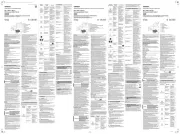
29 Juli 2025
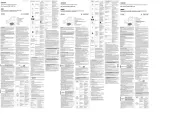
28 Juli 2025
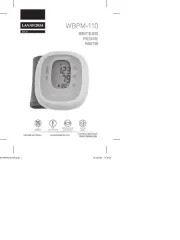
16 Juli 2025
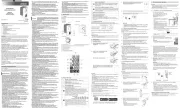
23 Mei 2025
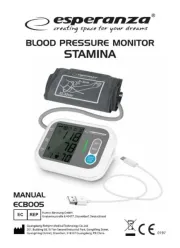
22 Mei 2025
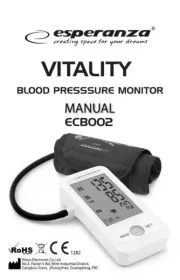
22 Mei 2025
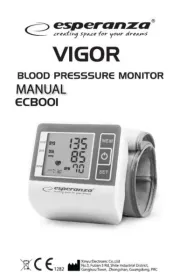
22 Mei 2025
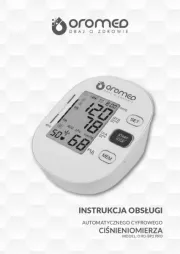
20 Mei 2025
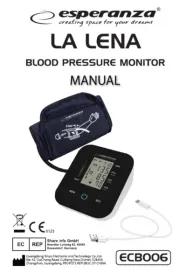
20 Mei 2025

20 Mei 2025